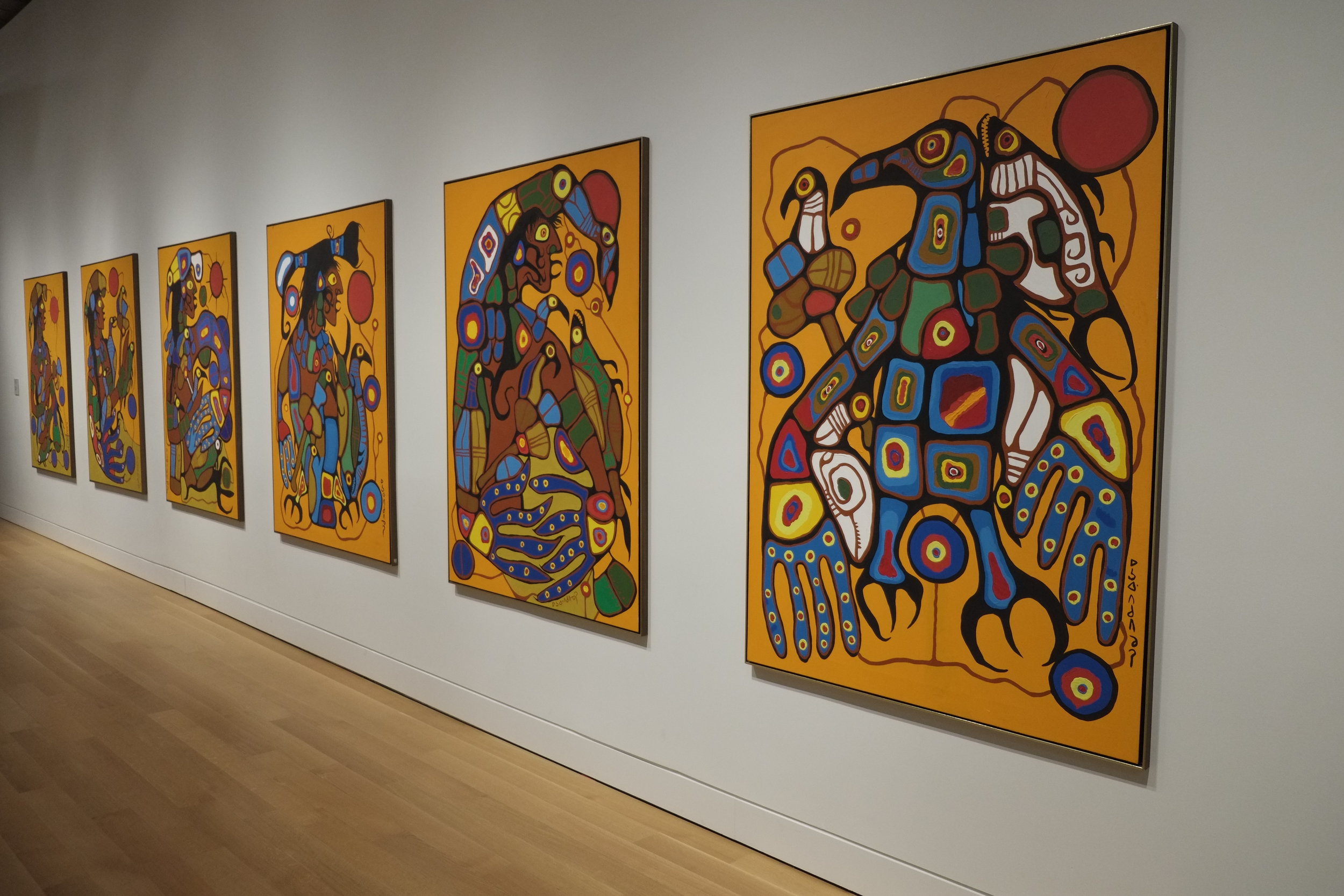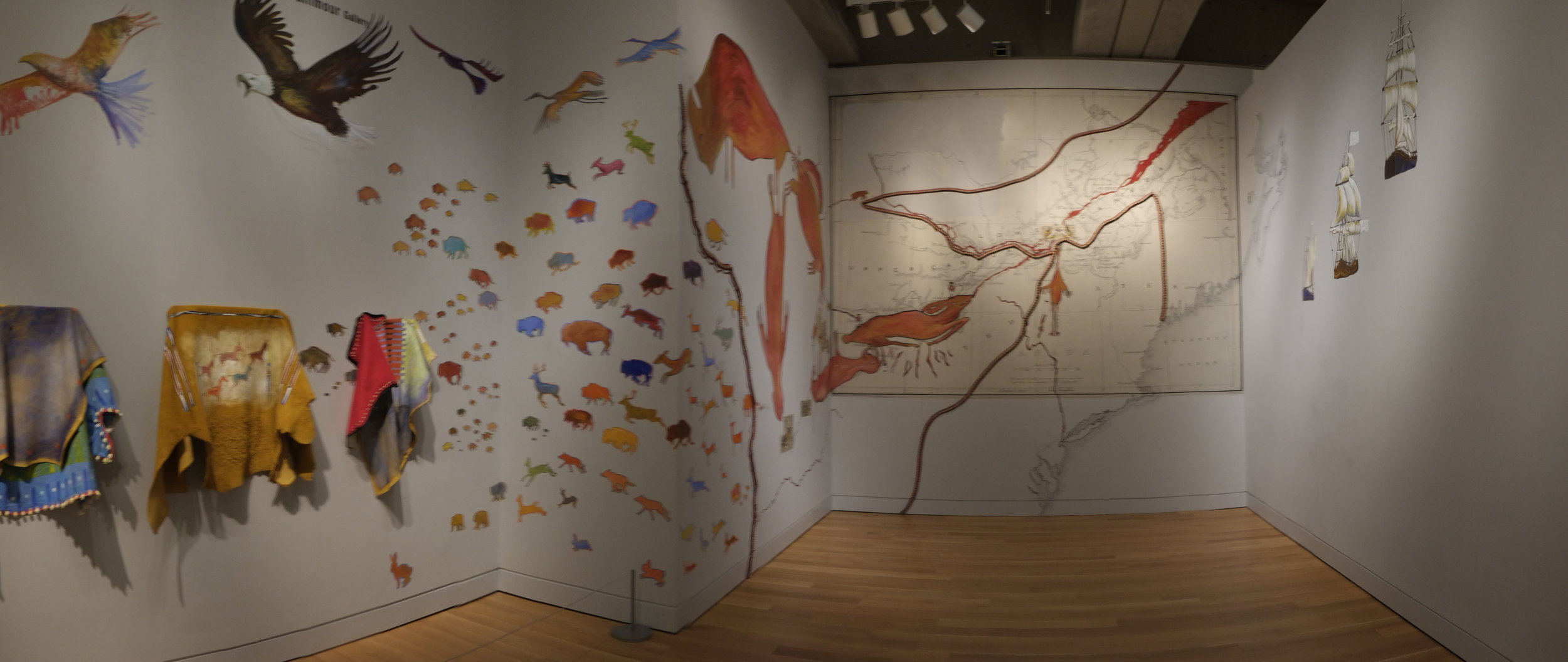On November 5 I visited three new photography exhibits at the National Gallery of Canada in Ottawa. In one way or another, all three were tied to the Canadian landscape whether in the past or currently.
For Canadians who were old enough to read books in 1976, the exhibit Between Friends is a reminder of a book of the same name published as a gift from Canada to the U.S. on the occasion of that country’s bicentennial. For this exhibit, photographer Andreas Rutkauskas revisited many of the locations along the 8,891 km border between the two countries. While much of the geography has not changed, the exhibit contains reminders that crossing the border has become more difficult and formal in recent years because of the rise of protectionism and isolationism in the U.S., and the new geopolitical reality throughout the world. The pictures are subtle and often beautiful and the boundary they point to can seem an artificial and arbitrary one. Why should the living situation of people leaving a couple of hundred metres apart be so different?
A similar theme is evoked in Frontera, a drone’s-eye view of the U.S.’s southern border with Mexico. These pictures, however, do not contain the open spaces and lightly-patrolled woodlands seen in Between Friends. The Mexican border is lined by a steel scar that runs across the landscape for many hundreds of miles through inhospitable wild places, sometimes broken by poor settlements on one side and wealthier communities on the other. More often, though, it is difficult—if not impossible—to tell which side of the frontier is which: the land is the same and it is a political negotiation that has traced a line through it. Looking at many of the pictures by Mexicans Pablo López Luz and Alejandro Cartagena, Canadians Mark Ruwedel and Geoffrey James, Swiss Adrien Missika, American Kirsten Luce and German Daniel Schwarz, it is easy to imagine that one day the land will absorb the border and all human traces will be forgotten.
The third exhibit, Gold and Silver: Images and Illusions of the Gold Rush, provides a photographic record of the stampede for California and Yukon gold in the late 19th century. While we cannot help but wonder at the bravery and greed that drove men and women to seek their fortunes in unforgiving locations, it is impossible to miss the impact on the environment that was the result of unchecked exploitation. Many of the worst cases—deforestation, slag heaps and diverted watercourses—are still there to be seen. The collection is a fascinating set of posters, daguerrotypes and tiny, vintage contact prints but, while image-making technology has moved on, it seems our care for the land has not evolved at the same pace.







